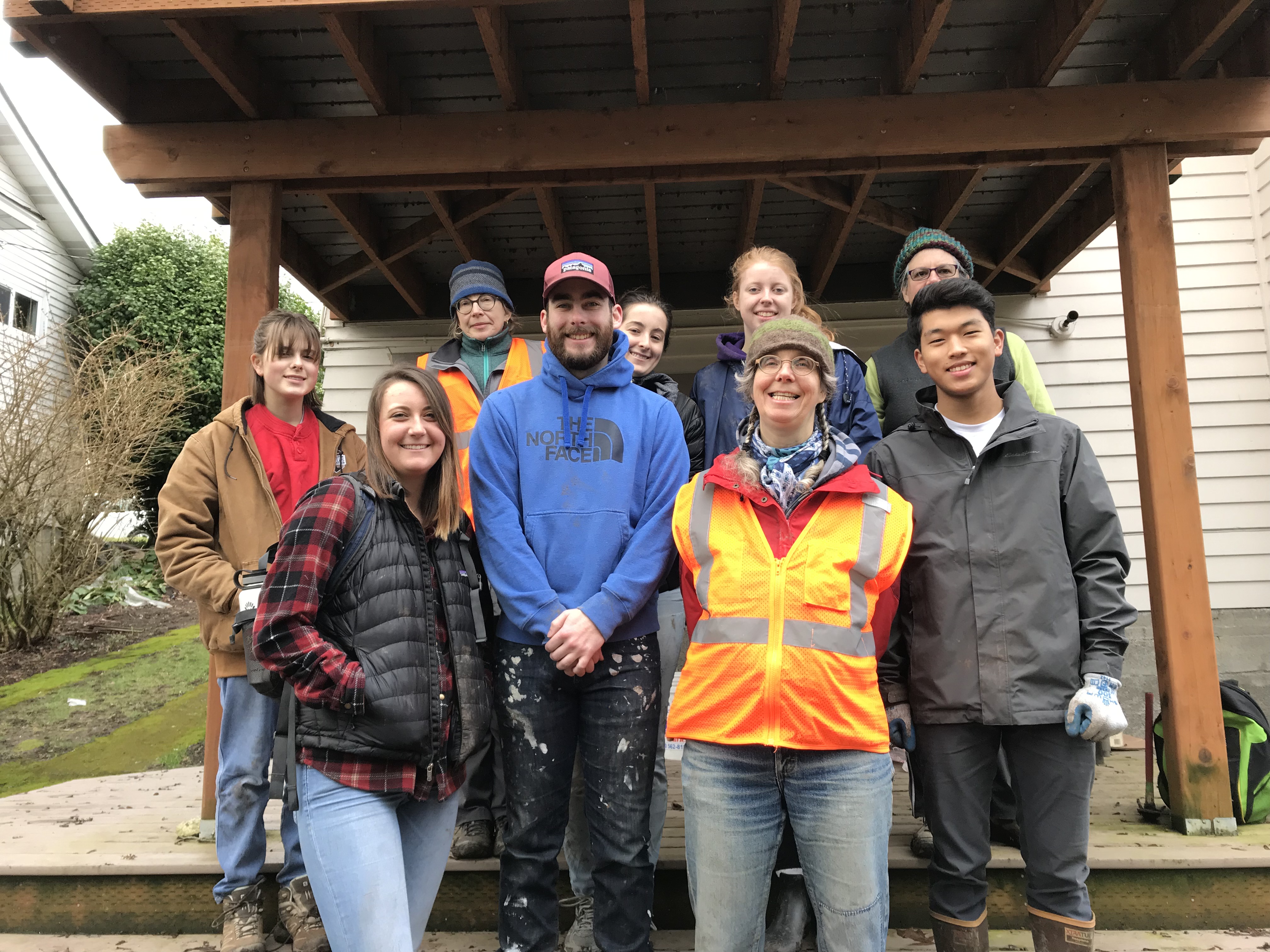
On a chilly but snow-free February morning, eleven volunteers gathered to work in our Greenbelt forest restoration site. Kelly, Antje and I served as team leaders. In addition, a neighbor, two students from Seattle University’s Environmental Perspectives class and five volunteers who had found us on the Green Seattle Partnership’s Event Page participated.
This was the first time we held a work party where the restoration work was exclusively in the Greenbelt site that is north of the Hanford Stairs. (Our main site is south of the stairs.)
After the initial orientation, we divided into three teams.
Teams One and Two
We have been having a problem with people dumping yard waste and trash into a section of the Greenbelt that we had begun to clear last fall. I wondered if we planted trees, shrubs and ground covers in that area if the dumping would stop.
Planting in that section would be no easy matter. Take a look at what the land looked like at the beginning of this work party.
(To get a better sense of the enormity of the task, click on the gallery)
Getting this land ready for planting will take many work parties. We decided to start in a section where the blackberry vines had been cut down but the root balls hadn’t been dug out (see the photo below).
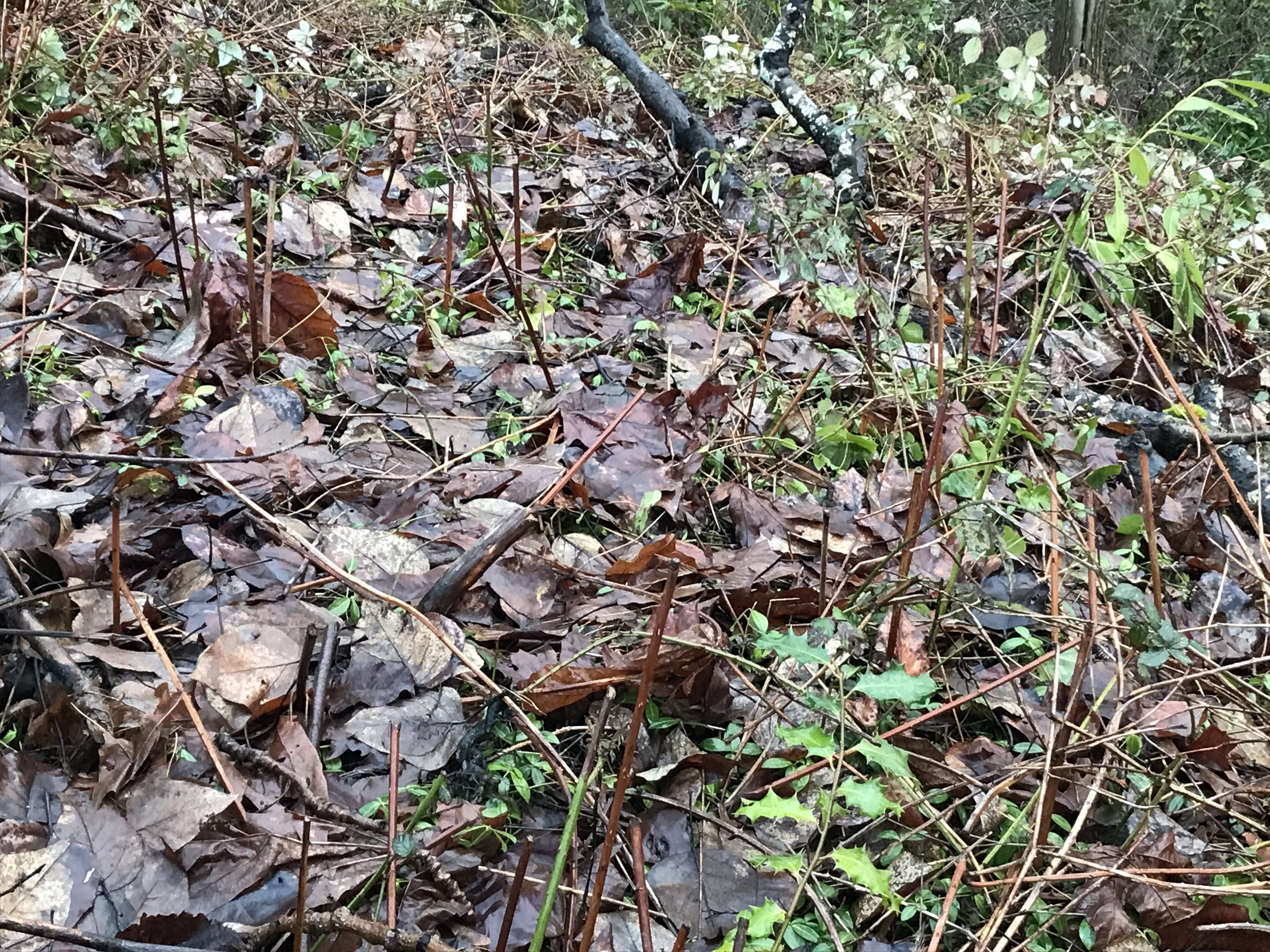
Our plan for this work party was to clear a small strip of land on the edge of the place where the Greenbelt becomes a steep slope. Once it was cleared, we would create a barrier along that strip. The barrier might be helpful in reducing dumping. Even if it wasn’t, it would make people more aware of the slope on the other side of it. [Note: barrier is probably the wrong word since the structure will only be 3-4 feet high, but I can’t think of a better one. Border is a possibility but that doesn’t seem right either.]
The barrier would be built from dried branches as well as materials that might slow down weed growth. All of the materials we will use to create it will decompose over time and enrich the soil. Once the barrier is built, we will plant the trees, shrubs and ground covers on the flat land that is east of it.
As the team began to work, they discovered that there were many layers of ivy and periwinkle vines both on top of the ground and under it. There was also a small holly plant.
The team worked diligently
While the first team was clearing the land in the strip, the second team did tasks that supported the first and third teams. For example, they filled buckets with wood chips and then took the buckets to the areas where the wood chips would be spread over cleared ground.
Once the buckets were empty, team two volunteers refilled them. They also filled several buckets with branches that would become part of the barrier. After some time, the second team joined the first team in clearing the strip.
These groups cleared a significant amount of land. This is what the strip looked like once the blackberry root balls, ivy and periwinkle vines had been removed.

During part of the clearing time, one of the volunteers cut cedar leaves off cedar branches that had been dumped in the Greenbelt. Sometimes the leaves were left on the thinner branches. Those leaves became the first layer of the barrier.
Next the team covered the cedar leaves with two layers of burlap bags.
Then a layer of wood chips was spread. The work party was almost over so we put a layer of branches on top of the wood chips. If there had been more time, we probably would have added a thicker layer of wood chips.
There will be many more layers in the barrier and in time the strip will be at least three times as long as it is now. I don’t know exactly what it will look like when we finish it. This project is definitely an experiment.
The first photo below shows the entire strip the team created that day and the second photo will give you a glimpse of the challenges we will face when we extend it.
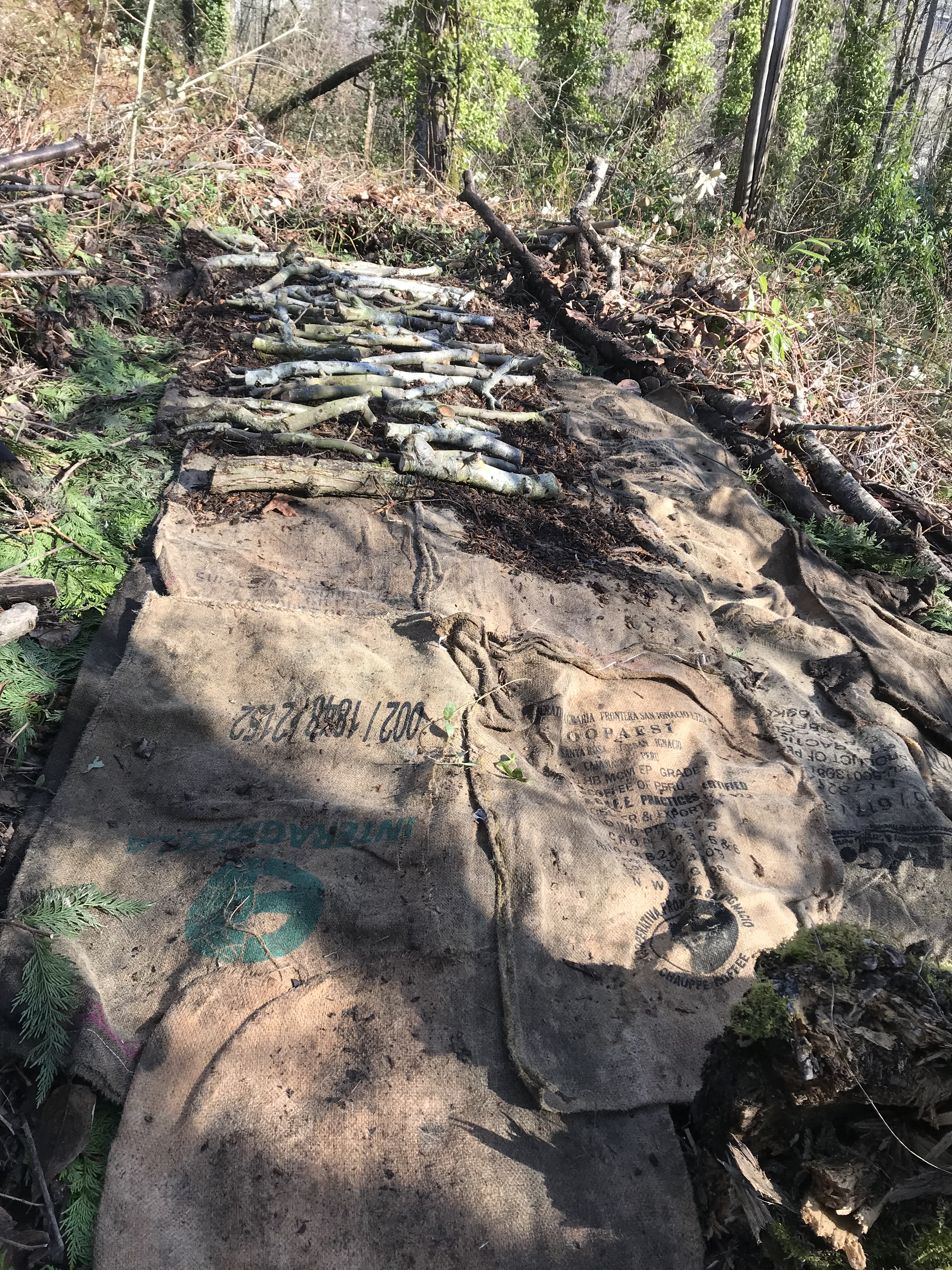
After 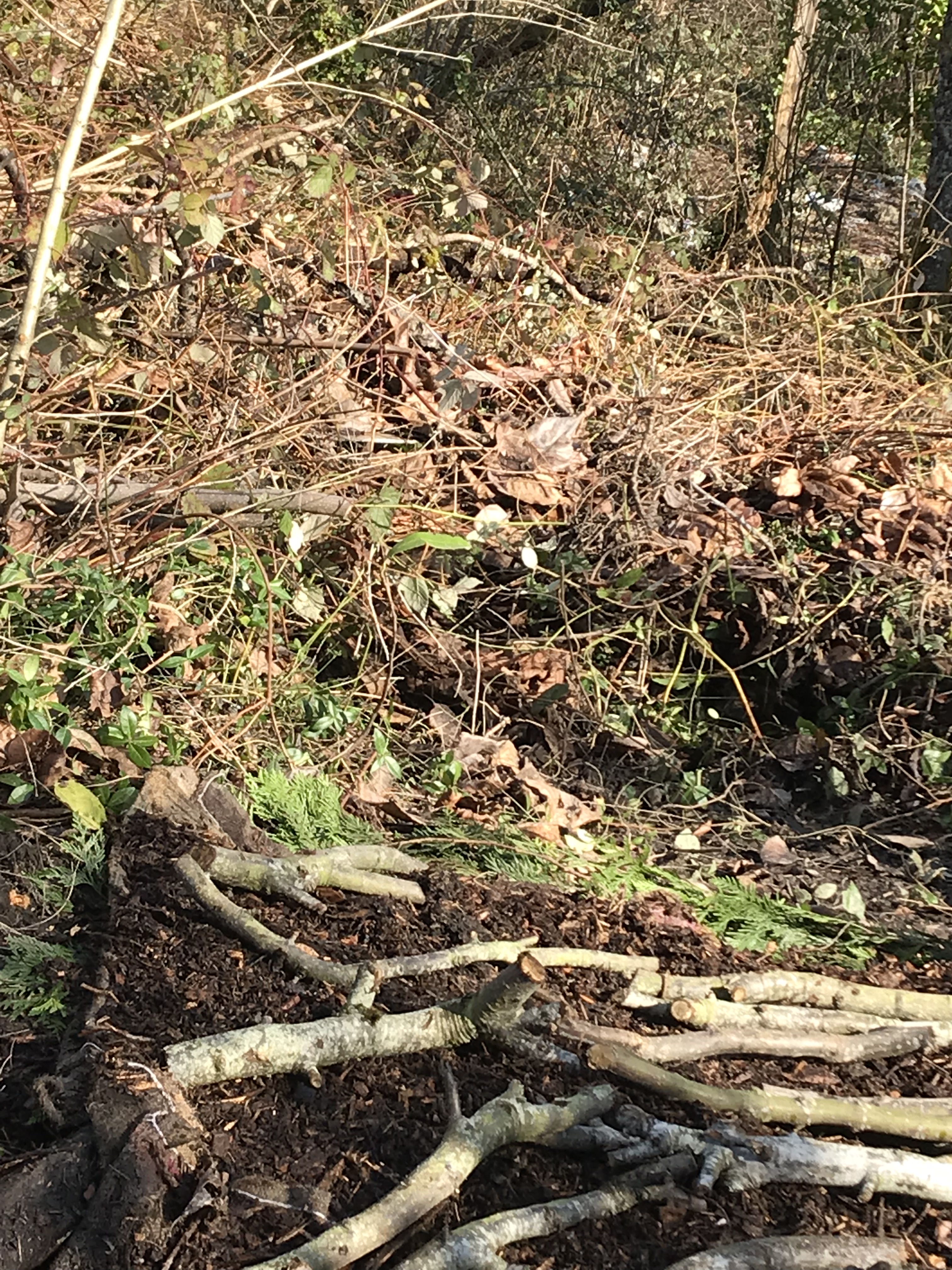
Future work
Team 3
The third team started their day clearing an area near the Hanford stairs; an area that also had invasive blackberry, ivy and periwinkle vines.
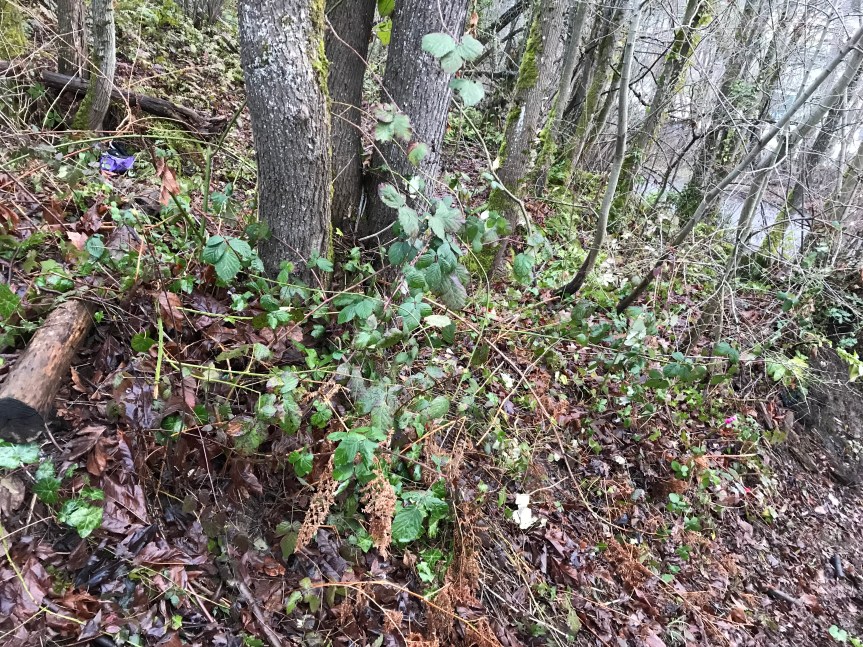
Before 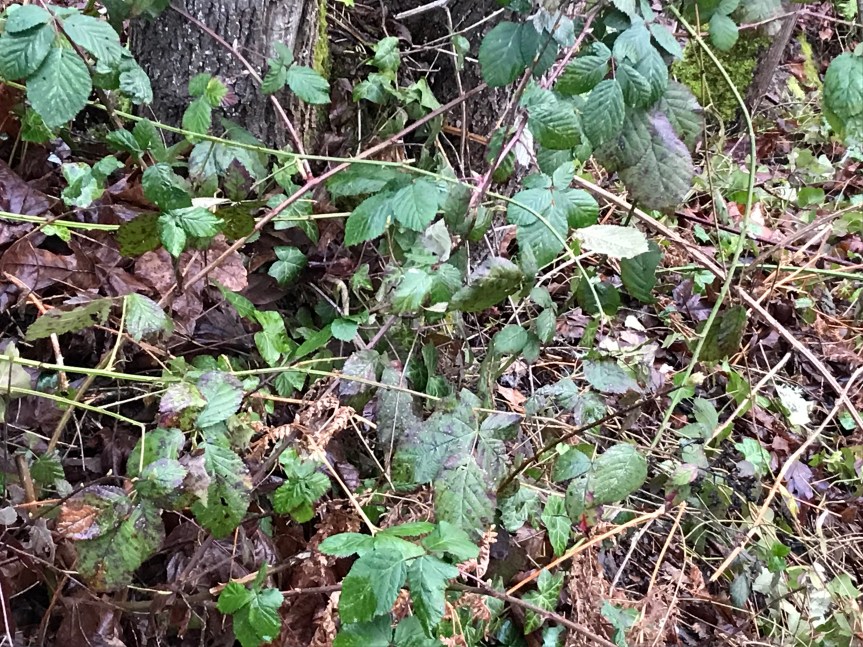
Before
As soon as a section was cleared, the volunteers covered the ground with wood chips. Here the wood chips serve primarily as mulch. I was excited to see the changes that were occurring before my eyes. When they finished the area along the stairs looked like this:
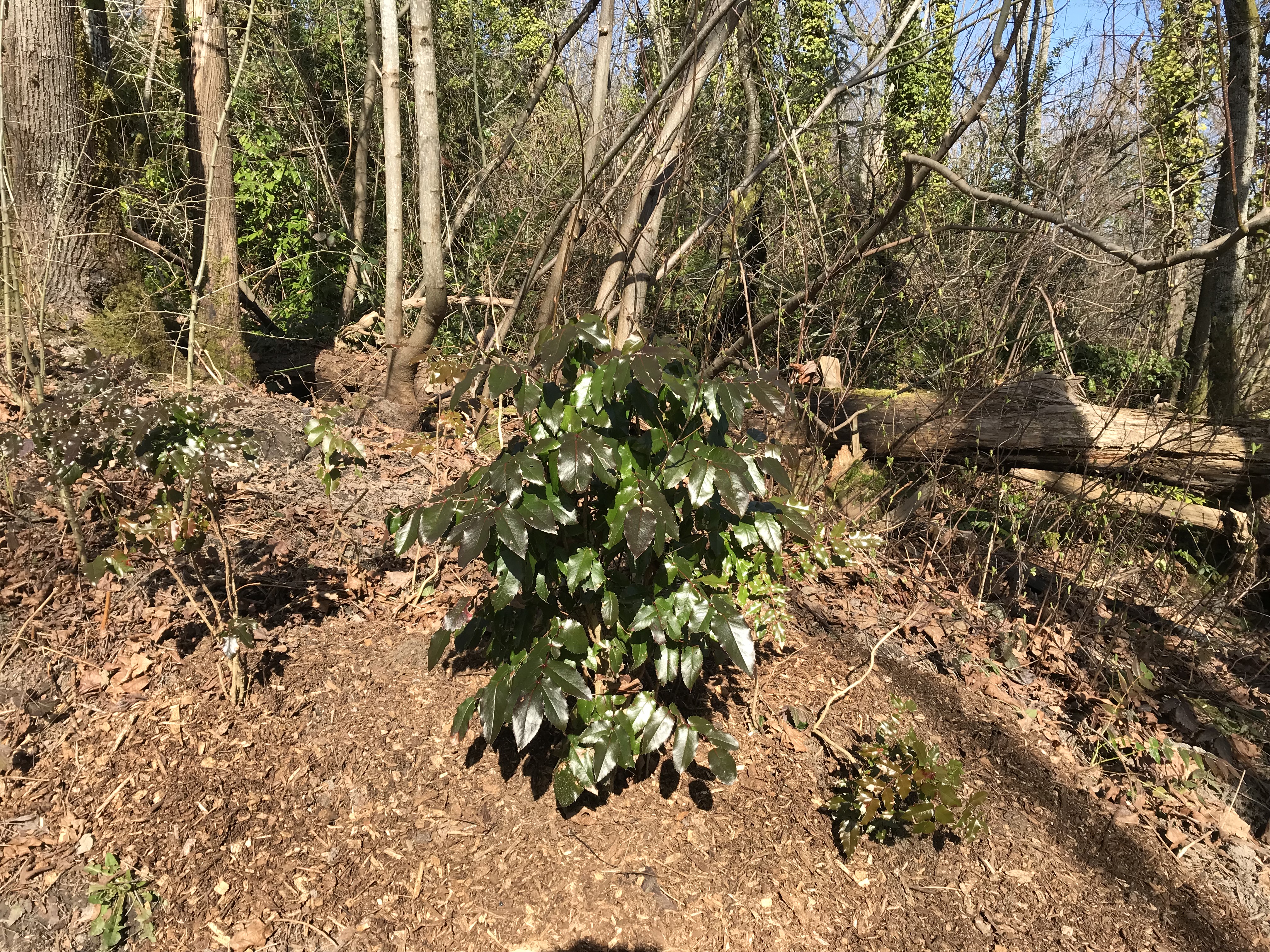
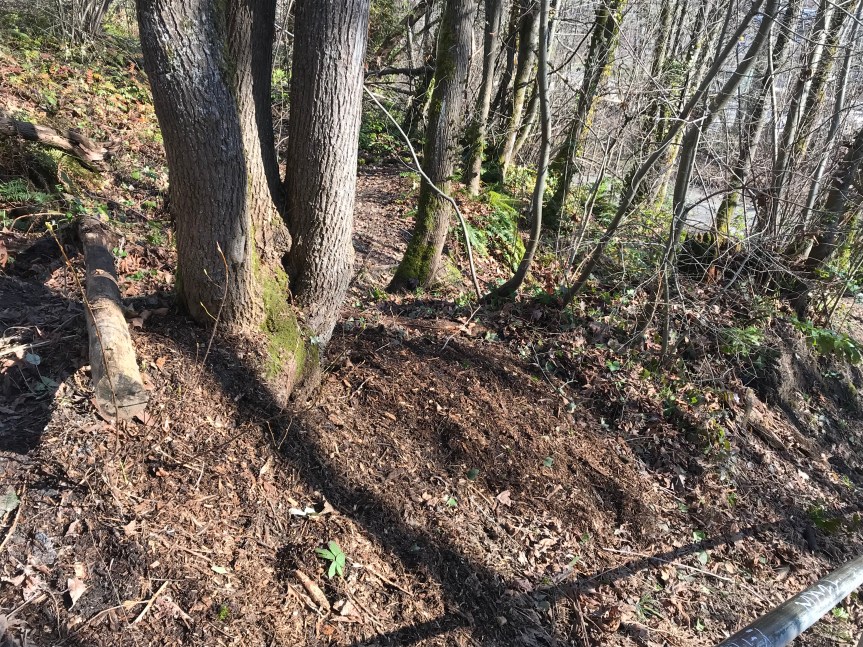
After a snack break, team three decided to clear invasive ivy, blackberry and periwinkle vines… and occasionally trash… in a part of the Greenbelt that was a bit further away from the stairs. One member of group two and I joined them.
I didn’t take before and after photos where this group worked except for the “after” photo below. It shows a section that is full of Dwarf Oregon Grape plants. The space between the plants used to be filled with ivy.

I give thanks to all of the volunteers who helped during this work party and during the work parties that proceeded it. It is due to the volunteers that this land is once again becoming a healthy forest.
***
I always enjoy writing these posts. Whenever I do that, I get to re-live the magic that occurs during each work party.
If you would like to participate in this restoration work, write me at hanfordstairsgreenbelt@gmail.com or you can find information about and/or sign up for our March 10 work party at: https://seattle.greencitypartnerships.org/event/15840/.

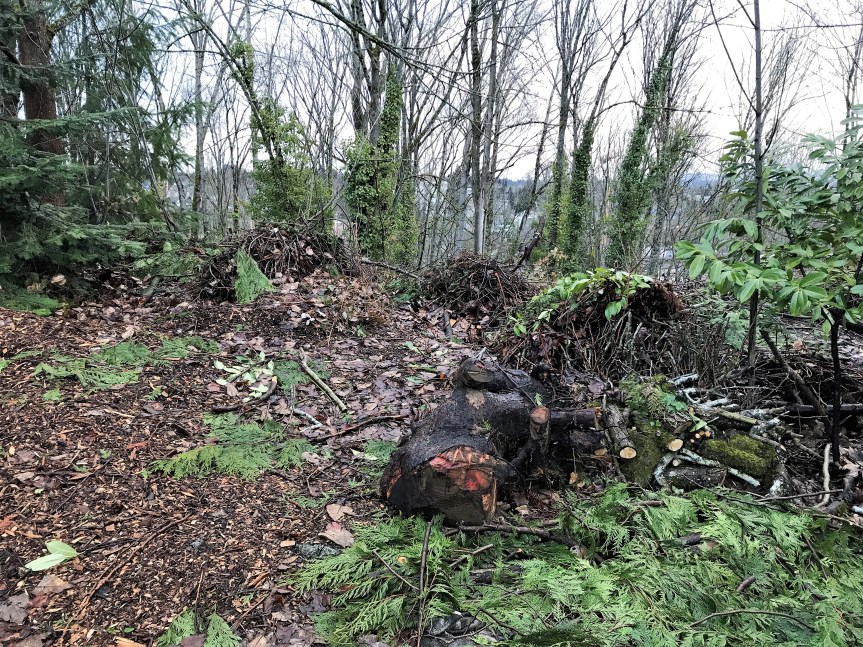
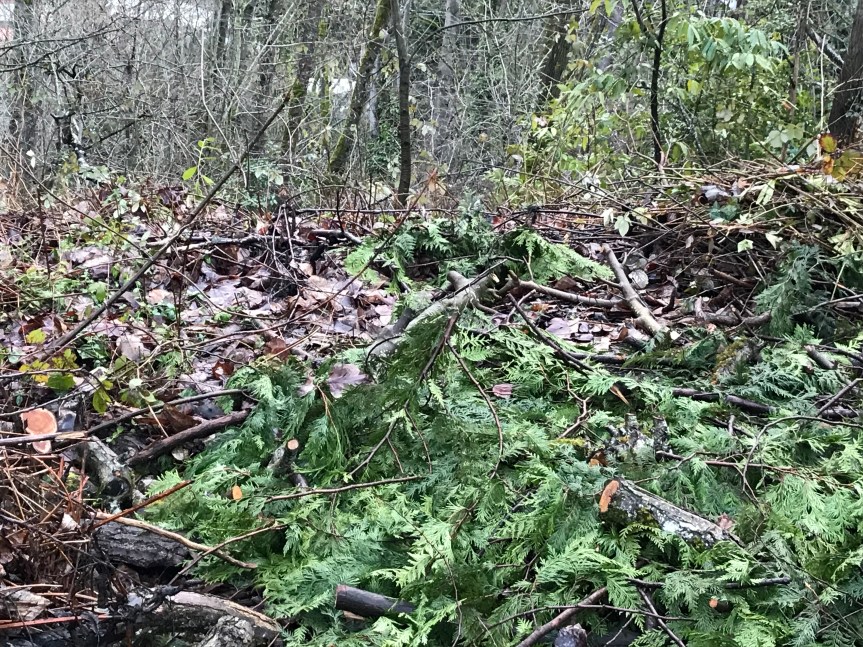
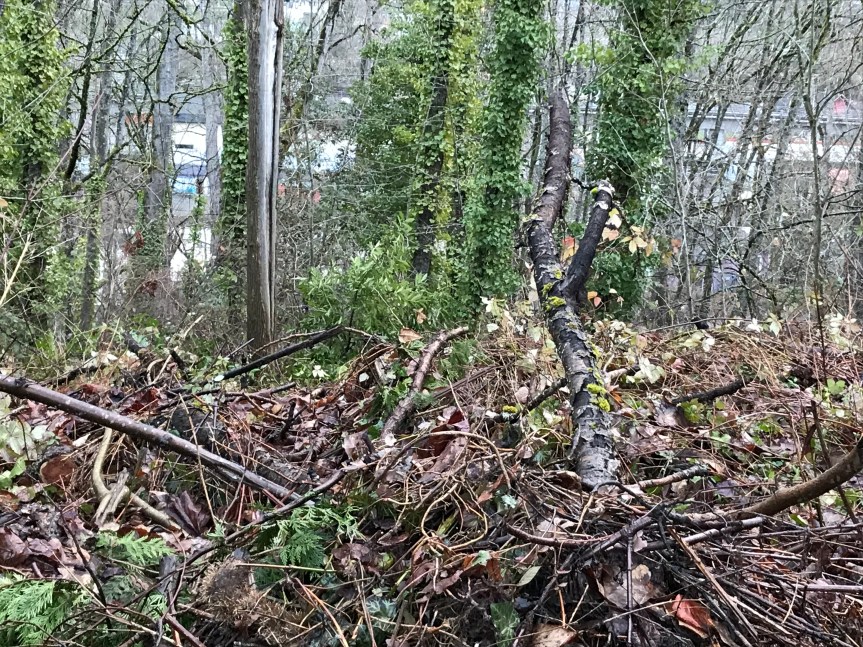

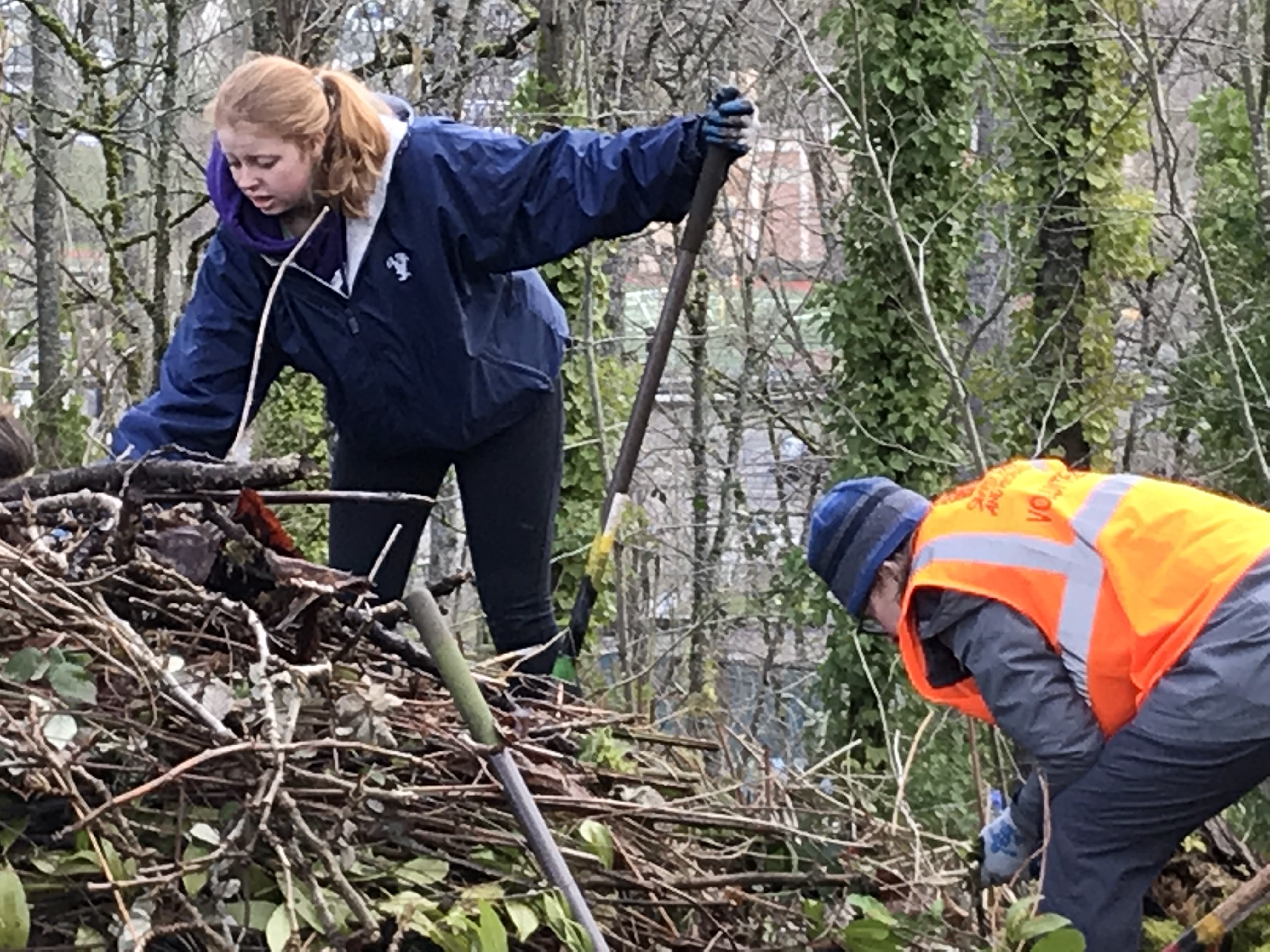
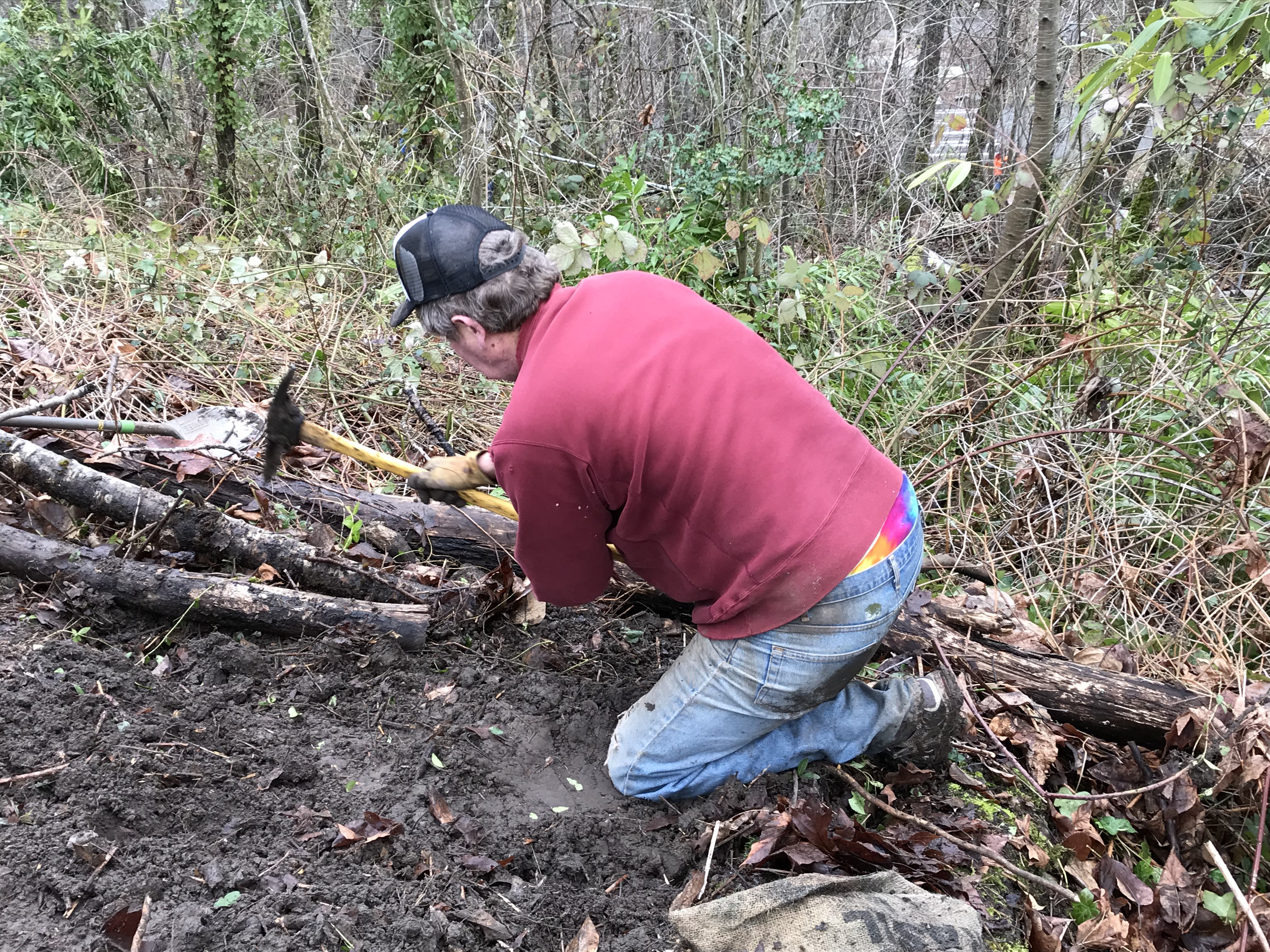
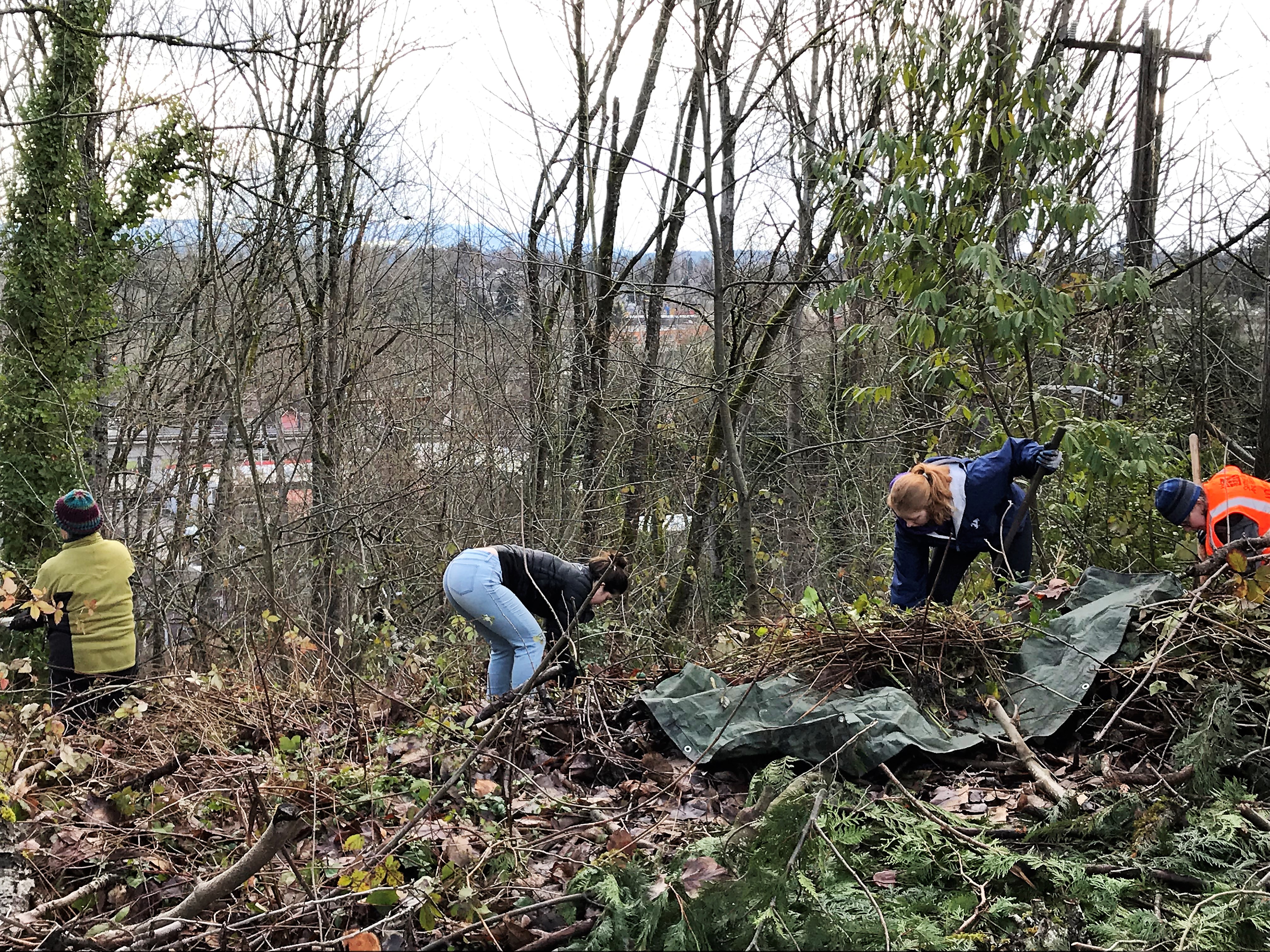

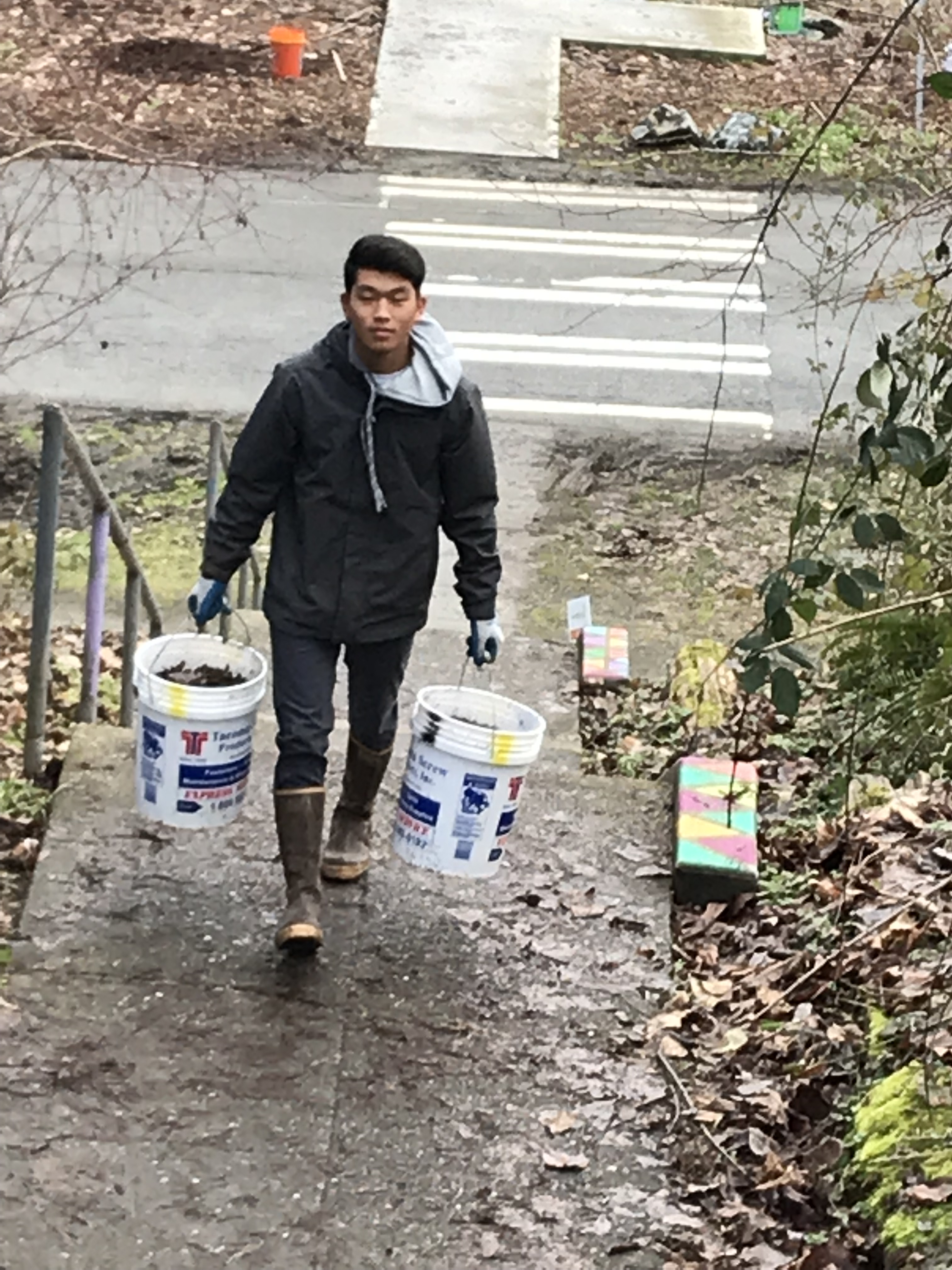
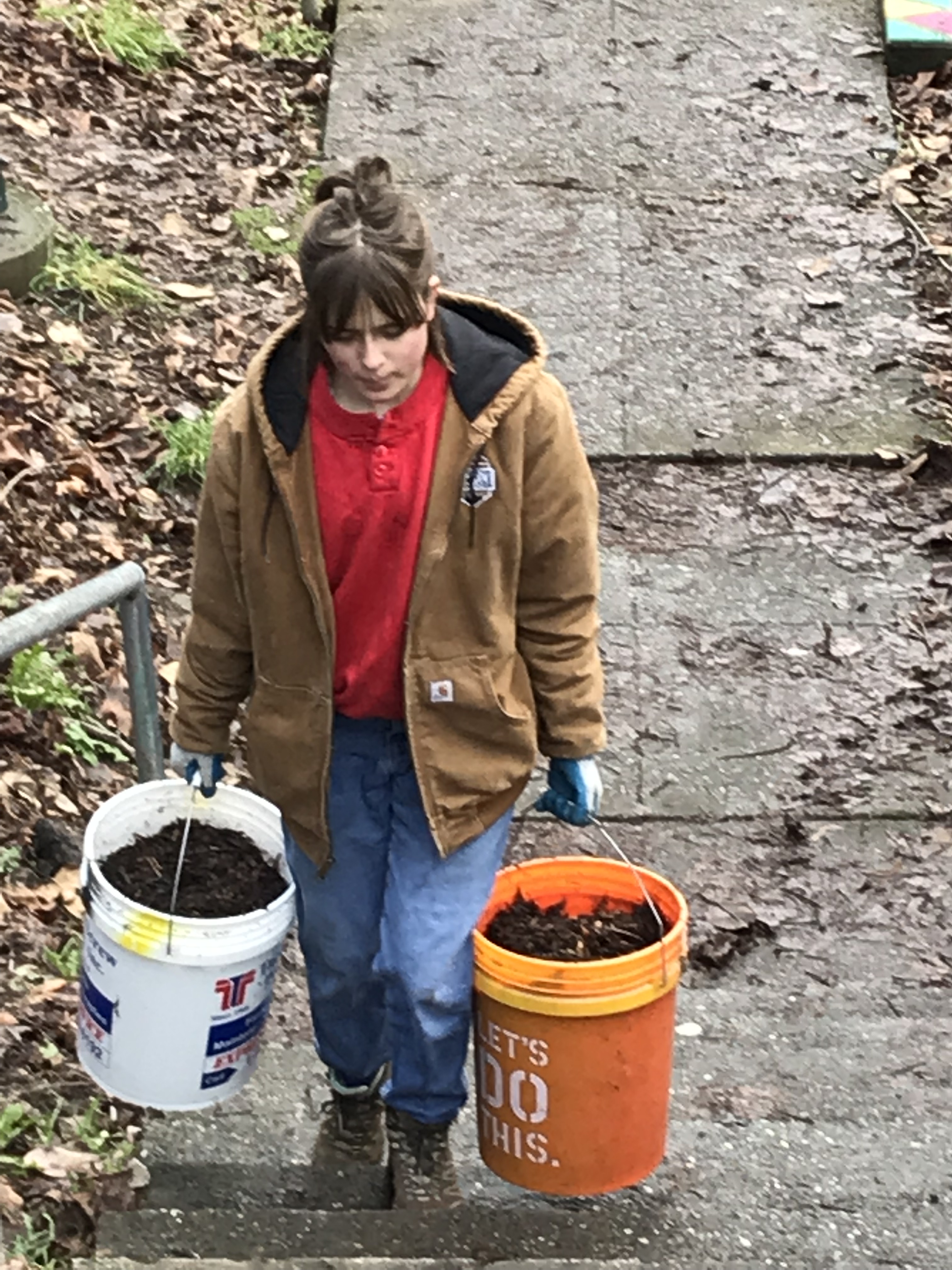


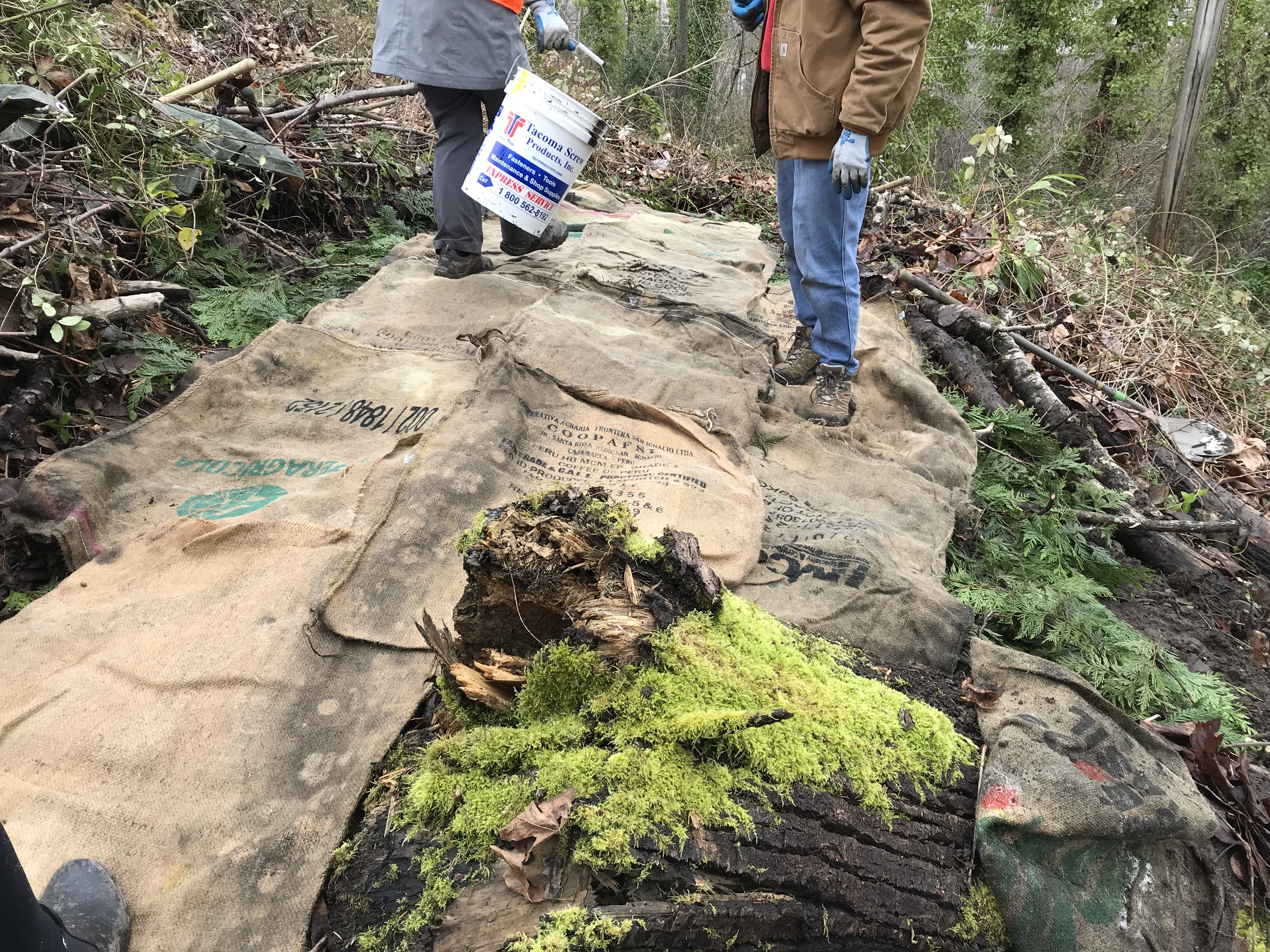
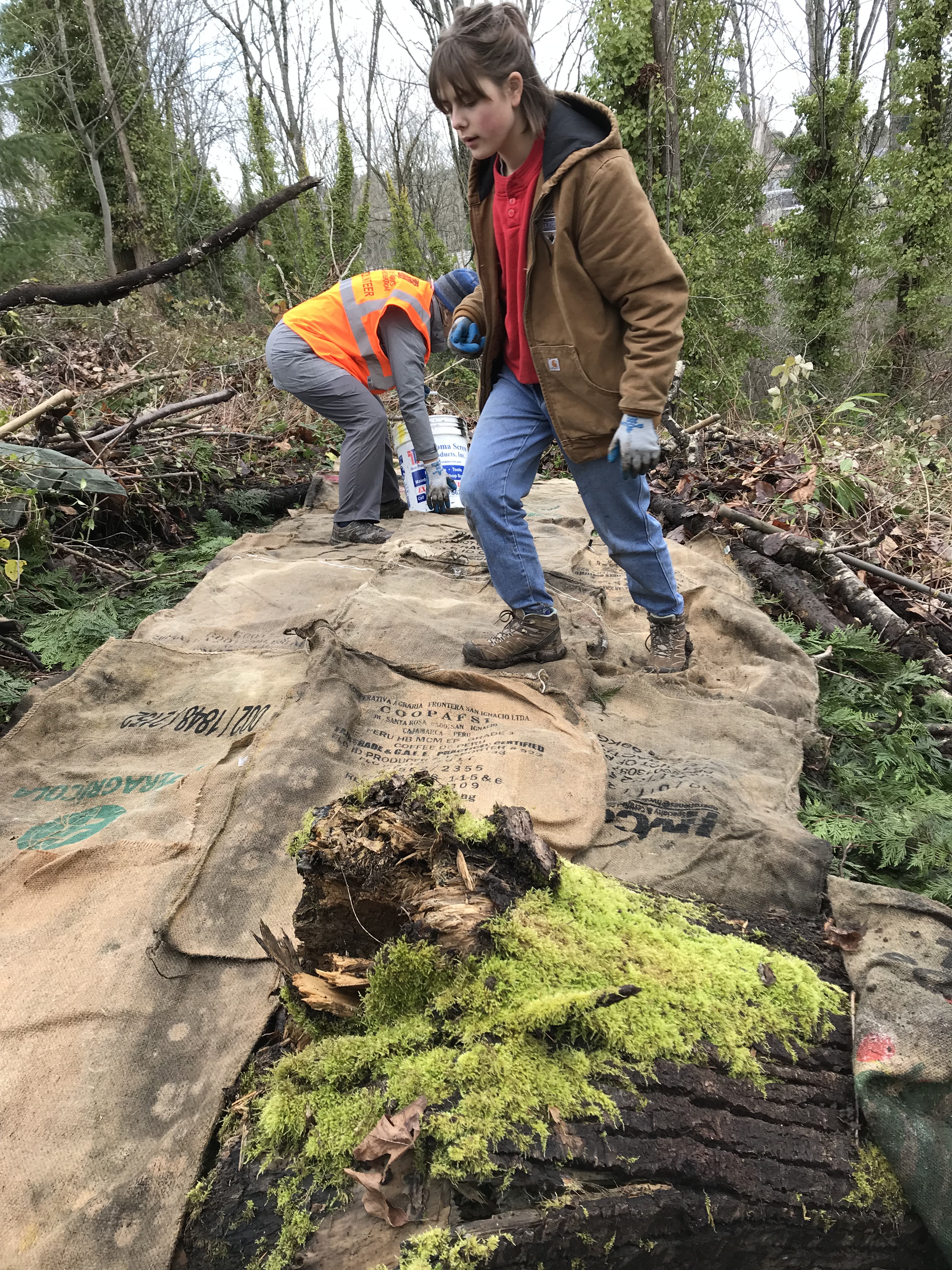

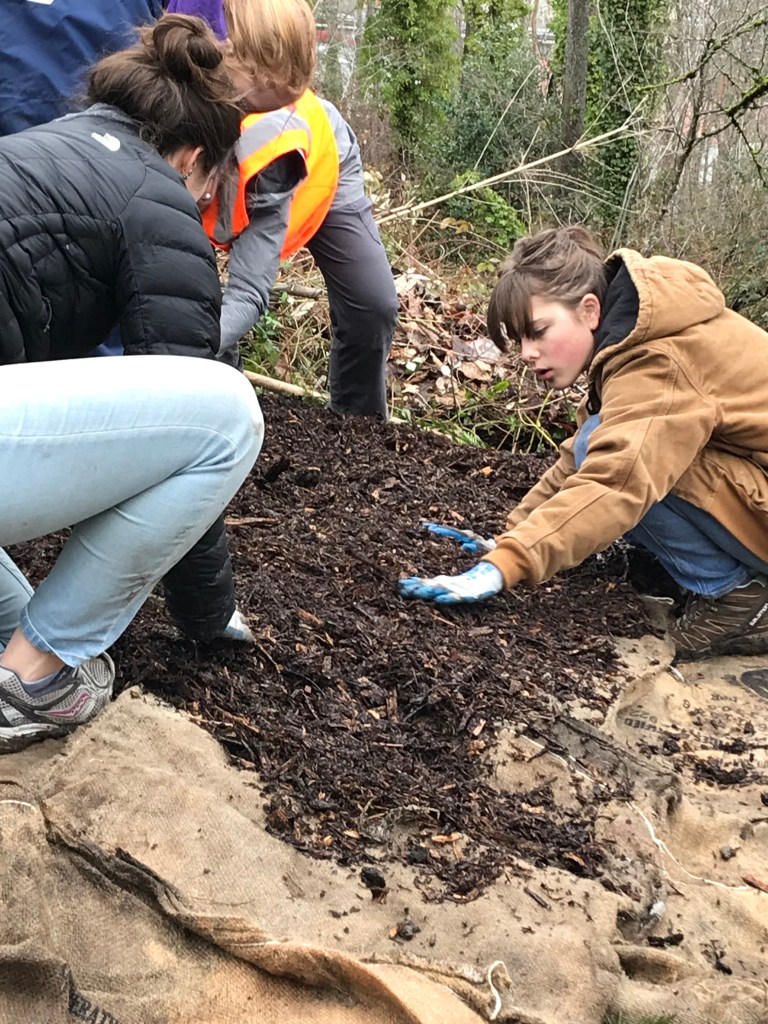

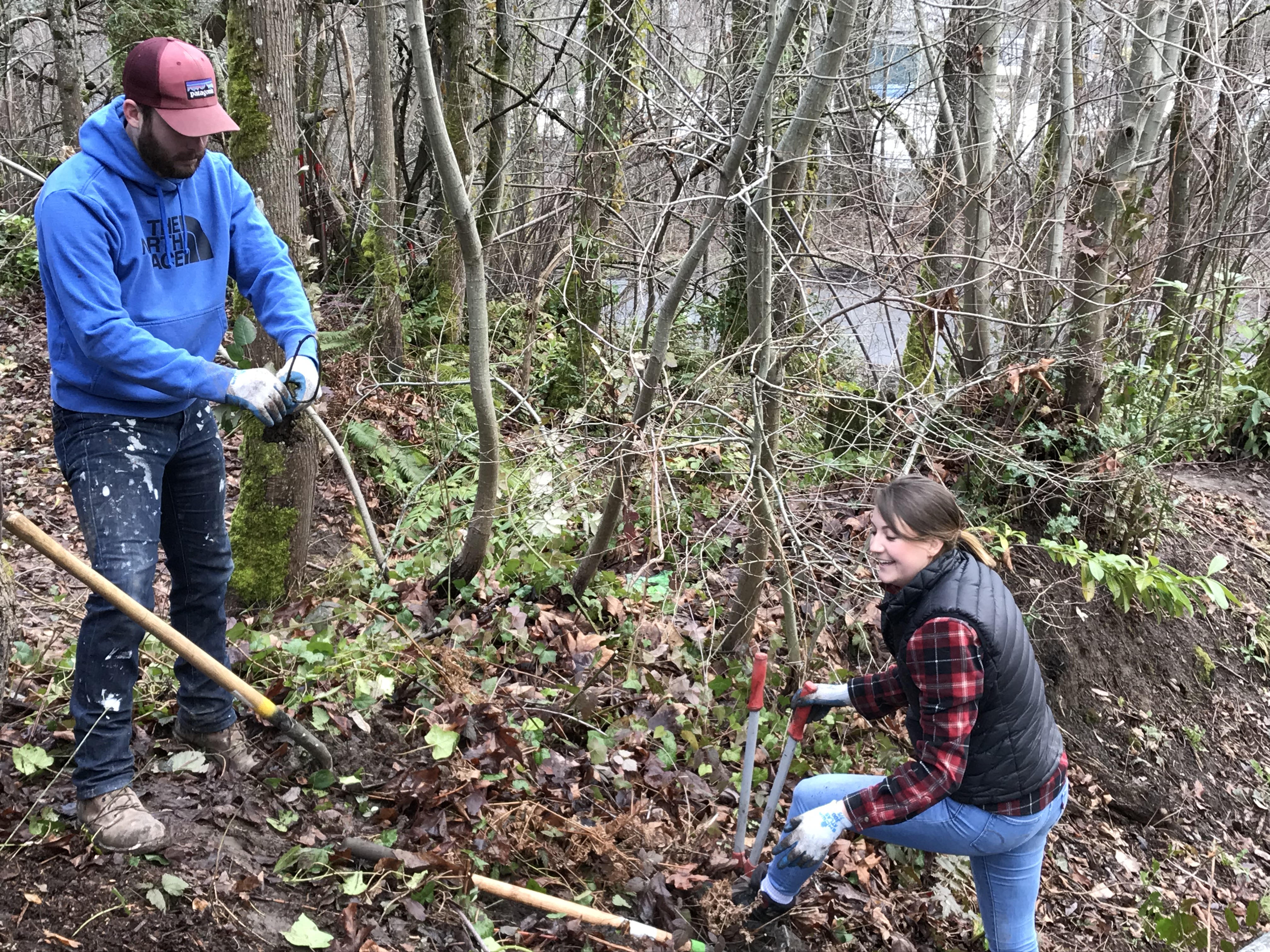
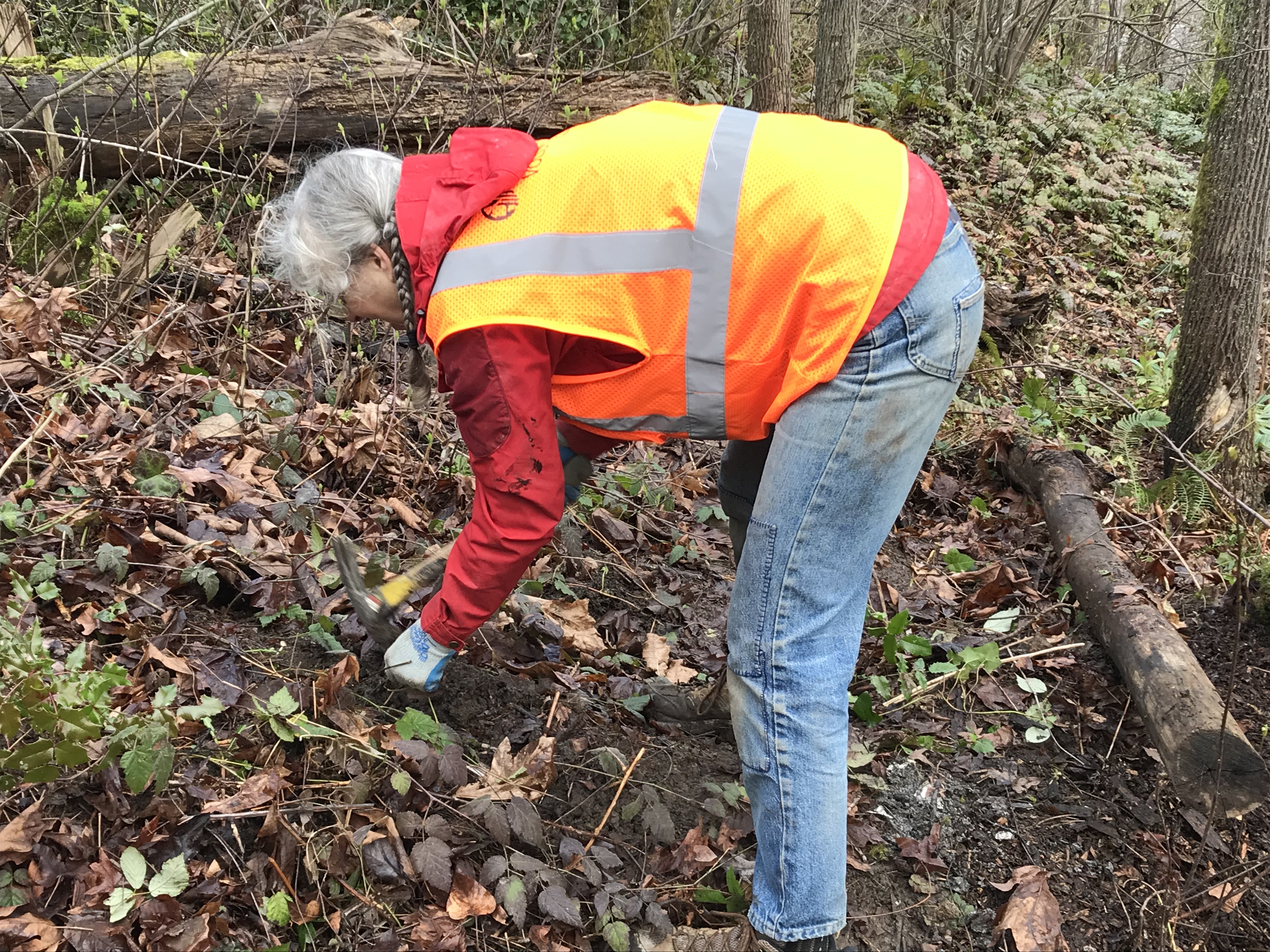



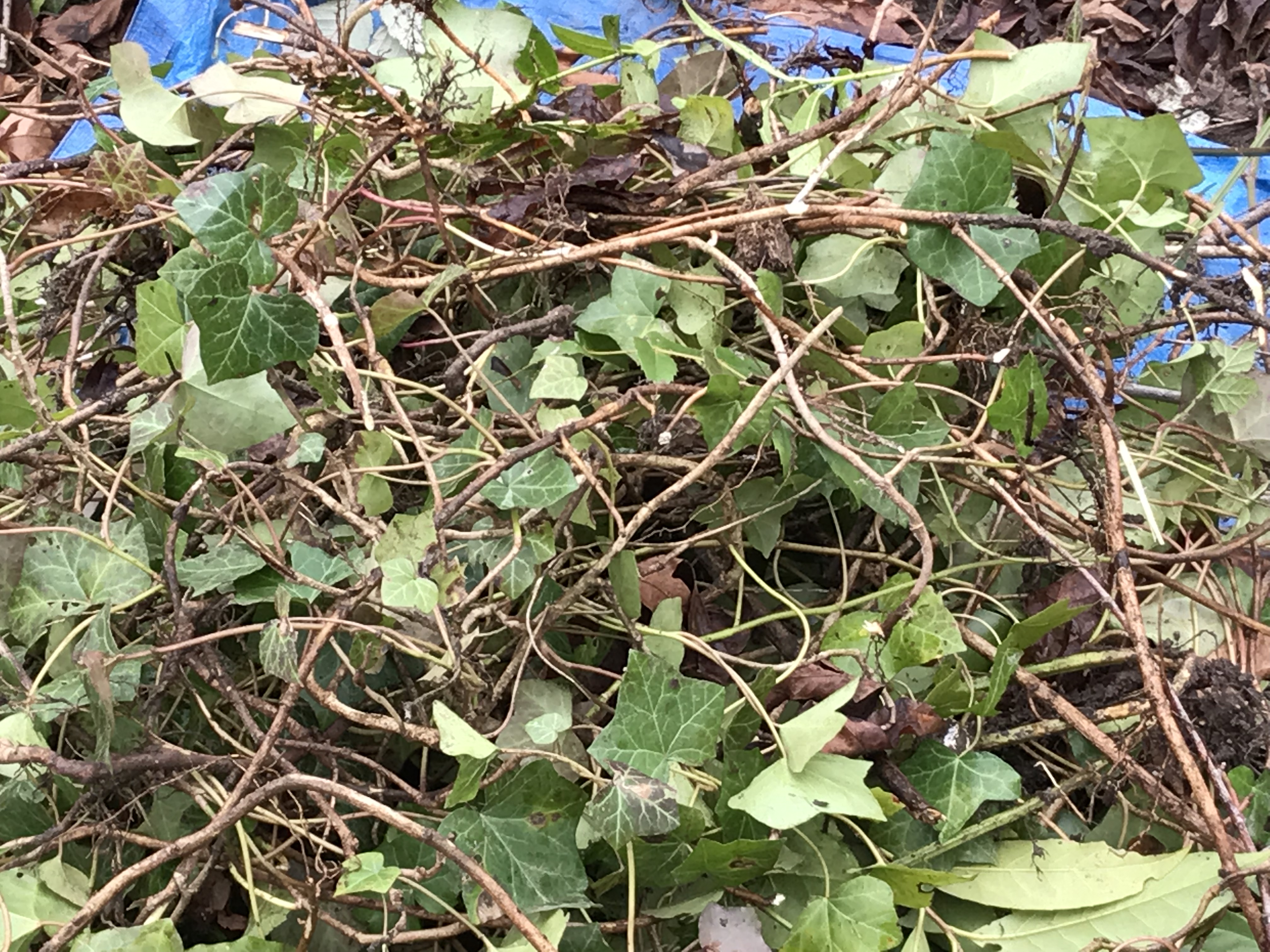
So much work done!!! wow!! Bravo and thank you for taking care of Mother Earth 🙂 x
LikeLiked by 1 person
I love this work. Yay for retirement.
LikeLike
Your retirement is the benefiting your city:)
LikeLiked by 1 person
catching up finally and so much fun reading and seeing all the progrss you are making!
LikeLiked by 1 person
Was fun to have you catch up. You sure read a lot of posts today!
LikeLike